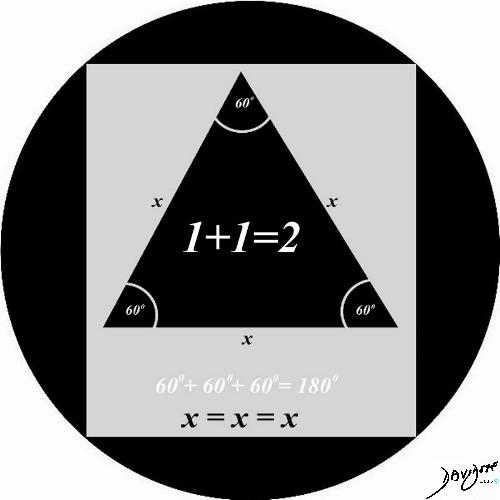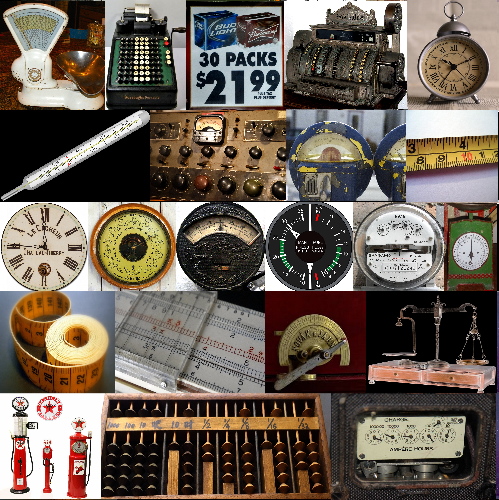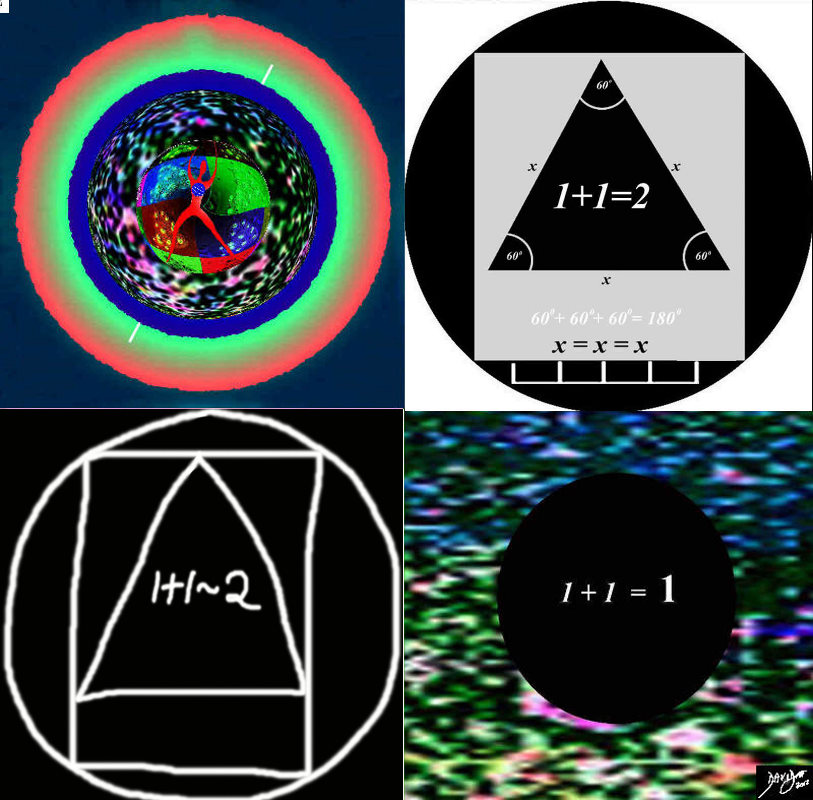
This equation reflects fundamental arithmetic known to everybody. The component numbers are numeric, measurable, logical, accurate (usually) and reproducible. For the lay person its the numbers we come across in day to day living, when dealing with addition, subtraction division and multiplication. The most common human example is the in the purchase of goods or food, where a particular product has a a price, and the transaction requires an exact amount of money in exchange

There are many instrument that require the arithmetic accuracy of numbers including thermometers, calculators, pressure gauges, PH meters, and scales for example. In biology and medicine it may be the mere counting of the heart rate, the number of white or red cells in the urine, the concentration of the blood sugar, or serum potassium.
The Equations We Live By

1+1 ≈ 2 The Art of the Science
This diagram shows the 3 major equations
Top left is an artistic rendering showing the recurring consequence as addition advances from the proton to the universe. The second shows an equation that reflects fundamental arithmetic known to everybody. The component numbers are numeric, measurable, logical, accurate (usually) and reproducible. For the lay person its the numbers we come across in day to day living, when dealing with addition, subtraction division and multiplication. The most common human example is the in the purchase of goods or food, where a particular product has a a price, and the transaction requires an exact amount of money in exchange
The third equation is not as straight forward and reflects the human input into the field. The component numbers could be numeric, measurable, logical, and accurate, but human intuition plays a key role in integrating the information and reaching a conclusion.
The 1 + 1 ~ 2 is the equation we use in our practical world. When we ask for for a spoon of sugar in a cup of tea, we do not expect an exact measure. Apples may be bought by the bag (1 + 1 ~ 2 method) If they are purchased by the pound ( it is the 1 +1 = 2 method.
The equation 1 + 1 = 1 does not make intuitive sense, though it communicates a crucial tenet of The Common Vein. The component numbers in the left side of the equation, could represent the letters of the alphabet, a musical note, a brushstroke of a painting, the components of an equation, or the atom of the universe. It is the equation that is used most commonly in The Common Vein, and is applicable in many situations of life. The end result (right side of the equation) provides an illogical, unexpected, surprising and sometimes even magical result. It implies that whole is a unified bigger than the sum of its parts.
Ashley Davidoff MD
